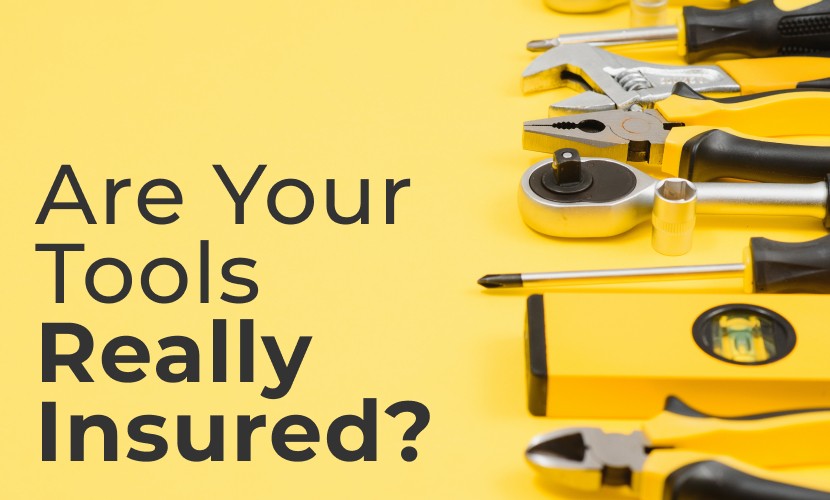Too often, there is confusion about why a contractor needs Tools & Equipment insurance and how it works. Some contractors think they already have coverage. The following is an overview to clarify several common misconceptions.
My General Liability policy covers damage or loss to my tools and equipment.
Not true. General Liability insurance is designed to cover third-party bodily injury and property damage claims—not damage to your property. If your tools are stolen from your truck or damaged on a job site, you need a Contractor’s Tools & Equipment policy for coverage.
My Property insurance covers damage or loss to my tools and equipment.
Property insurance typically covers items at your business location, not those that are mobile, in transit, or off-site. Property insurance excludes tools that move from site to site.
Only large contractors need this coverage.
Smaller contractors often assume their operation is too small to worry about this, but a few thousand dollars’ worth of tools can be a significant loss. Whether you’re a one-person operation or running a crew, tools are essential to your livelihood, and losing them can shut down your jobs for days—or weeks.
I don’t need to schedule my tools and equipment on the policy.
This will depend on the value of each of your tools and equipment. Many policies have a blanket limit for smaller tools, but higher-value items often need to be specifically listed on the policy to be fully covered. If a high-dollar item isn’t scheduled, you might not receive the full replacement value in the event of a loss, or it might not be covered at all.
I can replace my tools and equipment at current prices if I have a loss.
Not always. Some policies pay based on actual cash value (ACV), which factors in depreciation, meaning you may receive only a portion of the cost to replace your tools. You must purchase Replacement Cost coverage to replace damaged or lost tools and equipment with brand-new ones at today’s prices. It’s important to know what valuation method your policy uses.
My rented or borrowed tools are automatically covered.
Many policies exclude rented, leased, or borrowed equipment unless it’s specifically endorsed or added to the policy. If you’re renting equipment frequently, make sure your policy includes rented equipment coverage or you could be left liable for damages.
A Contractor’s Tools & Equipment policy covers wear and tear.
Contractor’s Tools & Equipment insurance protects against sudden and accidental losses, like theft, fire, or certain types of accidental damage. It does not cover regular wear and tear, gradual deterioration, rust, or breakdown due to lack of maintenance.
Talk to CCIS About Covering Your Tools & Equipment
Tools are a contractor’s most valuable asset. A project cannot be completed without the small hand tools in your toolbox or even the power tools you’ve accumulated over the years in business. Whether it’s a circular saw or a forklift, protecting the tools that make the task possible from theft, vandalism, or loss due to fire, wind, hail, or water is vital. Contractor’s Tools and Equipment insurance should be a part of your insurance program. Contact us at (800) 432-2641.
NOTE: The insuring agreement in a policy sets out the covered perils, assumed risks, and nature of coverage that the insurance company provides to its insured in exchange for the premiums paid. Thus, the terms and conditions of the policy will dictate whether coverage exists and the nature of any potential benefits.

